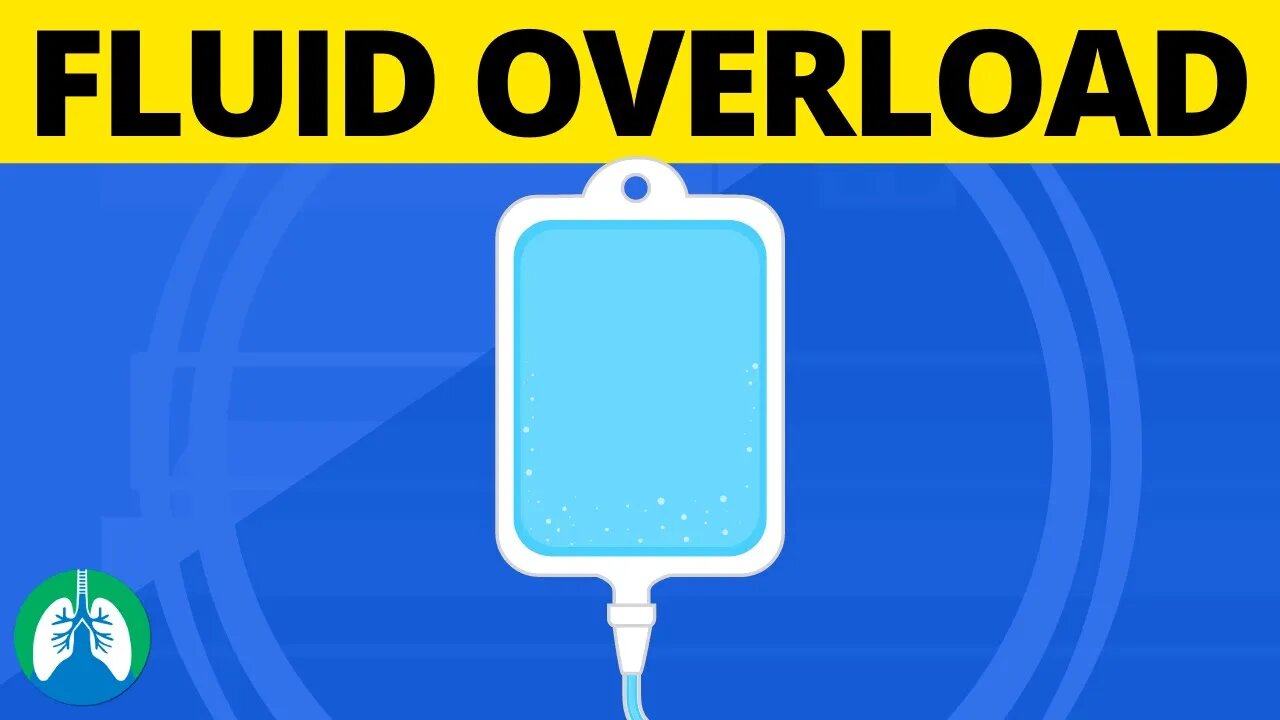Premium Only Content

Treating a Patient with Fluid Overload (Hypervolemia) | TMC Practice Question
Do you know how to treat a patient with hypervolemia? What are the signs of fluid overload? Watch this video for a sample TMC Practice Question.
🟦 TMC Test Bank (All Practice Questions) 👉 http://bit.ly/2IGeqSu
🟦 Daily TMC Practice Questions (via Email) 👉 http://bit.ly/2NnXh3C
➡️ An adult patient with fluid overload was given a dose of furosemide intravenously. After the drug was given, the patient displayed an arrhythmia on the EKG that was not present before. Which of the following would you recommend in this situation?
A. Defibrillate the patient
B. Administer another dose of furosemide
C. Administer a dose of epinephrine
D. Check the patient’s potassium level
➡️ Do you know the answer?
First and foremost, you needed to know that furosemide is another name for Lasix — which, of course, is a diuretic agent that is given to patients with fluid overload. In general, you need to know that when Lasix (or any diuretic agent) is given, it's normal for the patient to excrete a large amount of potassium.
➡️ What does the patient's Potassium Level tell us?
Potassium levels are associated with the heart, so this explains why the patient has a new arrhythmia. There is no indication to give more Lasix, nor is there an indication to give epinephrine. Also, there is no indication for defibrillation either.
—————
📗 BEST STUDY GUIDES FOR YOU
▪ TMC Test Bank 👉 http://bit.ly/2IGeqSu
▪ Hacking the TMC Exam 👉 http://bit.ly/2XBc8do
▪ TMC Exam Bundle (Save $) 👉 https://bit.ly/34pqEsV
▪ Daily TMC Practice Questions 👉 http://bit.ly/2NnXh3C
💙MORE FROM RTZ
▪ Free TMC Practice Exam 👉 http://bit.ly/2XlwASL
▪ Free RRT Cheat Sheet 👉 http://bit.ly/2IbmOKB
▪ Resources for RT's 👉 http://bit.ly/2WVV5qo
▪ Testimonials 👉 http://bit.ly/2x7b5Gl
🌐FOLLOW US
▪ Instagram 👉 http://bit.ly/2FhF0jV
▪ Twitter 👉 http://bit.ly/2ZsS6T1
▪ Facebook 👉 http://bit.ly/2MSEejt
▪ Pinterest 👉 http://bit.ly/2ZwVLPw
🚑MEDICAL DISCLAIMER
Medicine and Respiratory Therapy are continuously changing practices. The information in this video is for educational and entertainment purposes only. For medical advice, please consult with a physician or qualified medical professional.
💡AFFILIATE DISCLAIMER
This description contains affiliate links. If you decide to purchase a product through one of them, we receive a small commission at no cost to you.
—————
⏰TIMESTAMPS
0:00 - Intro
0:23 - Practice Question
0:57 - Explanation
1:44 - Correct Answer
—————
🖼CREDIT FOR MUSIC AND GRAPHICS:
▪ Music provided by https://audiojungle.net/
▪ Graphics: www.canva.com
▪ Graphics: www.freevector.com
▪ Graphics: www.vecteezy.com
▪ Graphics: www.pngtree.com
#TMCExam #TMCPracticeQuestion #FluidOverload
-
 4:01
4:01
Respiratory Therapy Zone
1 year agoLung Lobes and Fissures *EXPLAINED* 🫁
465 -
 1:27:55
1:27:55
Sarah Westall
18 hours agoSelecting World Leaders: Intelligence No Longer a Prerequisite w/ Martin Armstrong
10.3K3 -
 14:23
14:23
Sideserf Cake Studio
4 hours ago $0.08 earnedMAKING A REAL GHOST CAKE OF KING BOO!
1.97K -
 55:16
55:16
NAG Podcast
19 hours agoTiffany Gomas: BOLDTALK with Angela Belcamino
3.71K29 -
 9:56
9:56
It’s the Final Round
14 hours ago $0.11 earned💰NFL Week 4 Best Bets🔥Player Prop Picks, Parlays, Predictions FREE Today September 28th
2.07K -
 LIVE
LIVE
TheItalianCEO
2 hours agoFortnite WINS all day w/GlamourX
70 watching -
 25:11
25:11
Stephen Gardner
18 hours ago🚨Trump has been trying to WARN US!!
91.5K162 -
 51:41
51:41
X22 Report
6 hours agoMr & Mrs X - Tylenol Is The Start, All Roads Lead To The Vaccines, Chatter Amongst Big Pharma - Ep 9
109K40 -
 LIVE
LIVE
ttvglamourx
2 hours ago $0.04 earnedGLAMS DELULU FOR FORTNITE !DISCORD
71 watching -
 35:24
35:24
The Rubin Report
23 hours agoThe Simple Rules to Fight Crime Blue Cities Choose to Ignore | Jay Collins
46.5K29